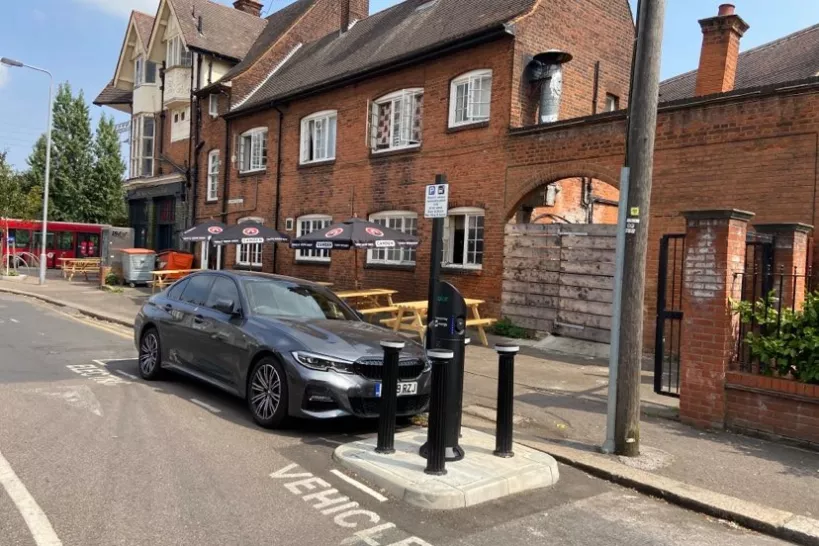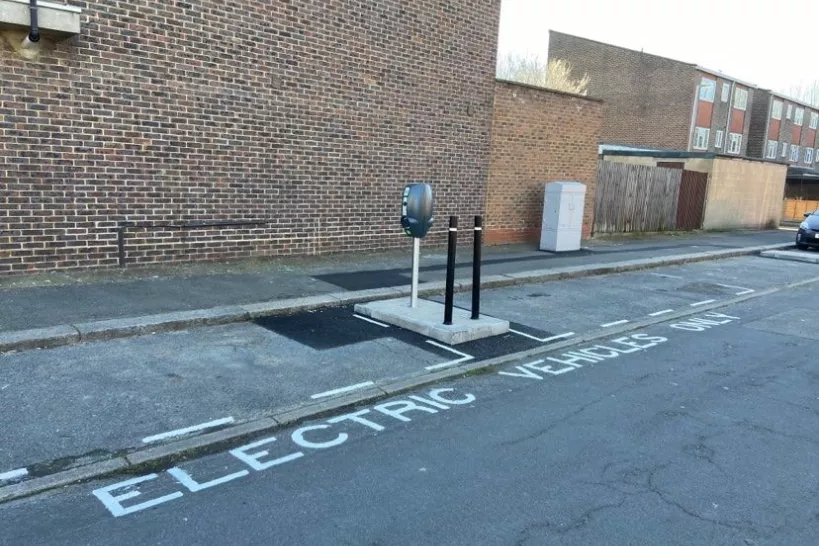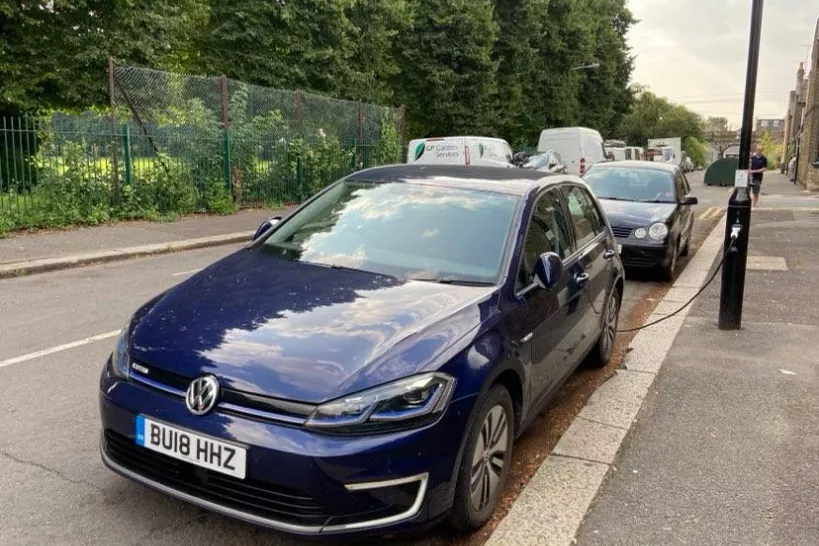Last updated: 6 November 2024
Next review: 18 April 2025
Should I transition to an Electric Vehicle?
Electric Vehicle (EV) ownership in Waltham Forest is growing quickly and the council is working to ensure that it is as convenient as possible to transition to an EV. Driving an EV over a petrol or diesel vehicle is a good way to reduce your carbon footprint.
As we transition to a low carbon society, EVs are becoming a key transport mode alongside cycling, walking and public transport modes.
On Street EV charging in Waltham Forest
The Council does not permit charging from a private power supply using cables across, above or under the highway. Private cables could cause serious injuries and if someone did deposit a cable they could also be liable. A number of London boroughs, including ourselves, have concerns regarding maintenance and cleansing, coordination of utility works, safety, and legal conditions.
By working in partnership with a range of private charge point operators including BP Pulse, Shell Recharge, and Believe we continue to expand the network of public EV charging points.
There are four categories of on-street charging points currently in operation in the borough:
Residential Lamp Column
Typical kW: 5.5kw
Charge time: 7 to 8 hours (typically used overnight)
Number in Waltham Forest: 453*
Standard Free Standing
Typical kW: 7kw
Charge time: 4 to 6 hours (typically used overnight)
Number in Waltham Forest: 31 (62 sockets available)*
Fast Free Standing
Typical kW: 22kW
Charge time: 3 to 4 hours
Number in Waltham Forest: 201 (403 sockets available)*
Rapid
Typical kW: 50kW
Charge time: 80% in 30 mins
Number in Waltham Forest: 4*
- *Correct as of August 2024
Charge point operators in Waltham Forest
There are currently three charge point operators in Waltham Forest.
BP Pulse Network (Fast Free Standing)
Charge your vehicle by using a simple RFID card with a monthly payment, or on a pay as you go basis via the bp pulse app.
Charging support is available 24 hours 7 days a week by calling 0330 016 5126 or you can submit an enquiry form

Believ (Fast Free Standing)
Information on how to use the Believ network, formerly Liberty Charge, is available through the Believ website.
Customers have the option to become a Believ member or to ‘pay as you go’.
Charging support is available 24 hours 7 days a week by calling 0800 051 5335 or by submitting an enquiry form

Shell Recharge Network (Residential Lamp Column)
Lamp column charging points do not have dedicated EV only parking bays so users need to comply with local parking controls, including controlled parking zones. Multiple charging points are installed at each location to ensure a point is available.
Shell Recharge lamppost charging points can be accessed using a standard type-2 cable. It is the user’s responsibility to ensure that their cable is used safely at all times and does not cause any obstructions or trip hazards on the footway.
Shell Recharge lamppost charging points are operated by Ubitricity, for more information on the charging points and which cables are compliant please visit the Ubitricity website.
Charging support is available 24 hours 7 days a week by calling 0800 024 6279 or emailing support@ubitricity.co.uk

Electric Vehicle Myth Busting
Electric Vehicle Myth 1
Myth: “EV’s do not have sufficient battery range for a longer journey.”
Fact: “99% of car journeys in England are under 100 miles. Lots of new electric vehicle models have a battery range of more than 200 miles.”
Electric Vehicle Myth 2
Myth: “Electric vehicles are far more expensive than petrol or diesel cars.”
Fact: “It is becoming more affordable to buy a new or used EV. In addition, running costs are significantly less than petrol/diesel vehicles. Powering an EV with electricity still costs less than buying petrol or diesel, despite recent rises in energy prices.”
Electric Vehicle Myth 3
Myth: “Only people with off-street parking are able to easily charge their EV.”
Fact: “Waltham Forest Council have installed over 900 public EV charging sockets in the borough since 2018, and we are working to increase this further. You can view the locations of public charging points near you via Zap-Map.”
Electric Vehicle Myth 4
Myth: “Building an EV generates more greenhouse emissions than it saves.”
Fact: “A new battery-electric car emits just a third of the lifetime greenhouse gas emissions of an equivalent new petrol car, even when taking into account battery production and disposal. EV’s are getting progressively cleaner as electricity generation decarbonises.”
How are locations for public EV charging points selected?
As we expand the EV charging point network in Waltham Forest, we are on the lookout for potential new sites. We take into account existing resident demand as a key factor during the site identification process. You can indicate that you would like an EV charging point on your street via this survey. Completing this survey helps us build a picture of existing demand, so that we can identify sites in the best locations for everyone.
There are several other factors which determine site feasibility for an on street EV charging point. These include the number of parking bays available, existing highway design and proximity to an electrical connection.